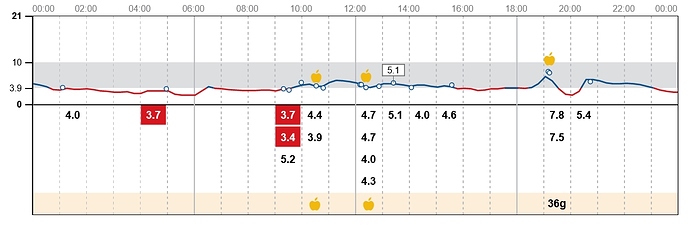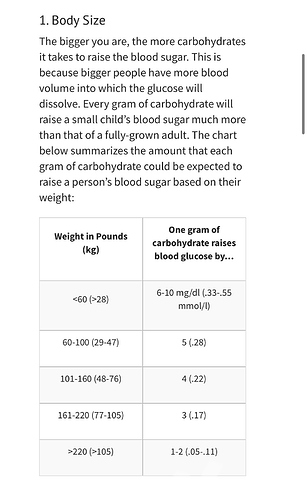I just started to use a CGM and the the following image shows yesterdays readings.
At around 6 pm I had a small meal with approximately 36 g of carbs. I normally don’t eat that much carbs in one meal, but wanted to see what it did to my BG levels. As you can see my glucose spiked to approximately 7.8 from 4 mmol/L (i.e. an increase of approximately 3.8 mmol/L) one hour later and by 2 hours had dropped to what appears to be approximately 3.5 mmol/L and then bounced back to the mid 5’s.
Does an increase of 3.8 mmol/L in response to 36 g or carbs still indicate a degree of metabolic dysfunction?
Does the quick fall in BG within 2 hours of the meal suggest that my insulin sensitivity has improved and appears to be more normal? than previous?
Any idea what would cause my BG to bounce back to up to 5.4 after the apparent hypo (no additional food was eaten)?
Does anyone using this meter know how to get it to record peaks and lows, numerically in addition to the graph?


